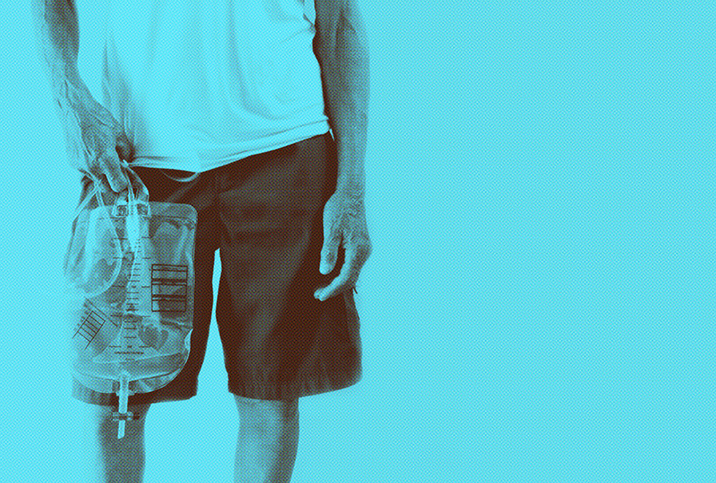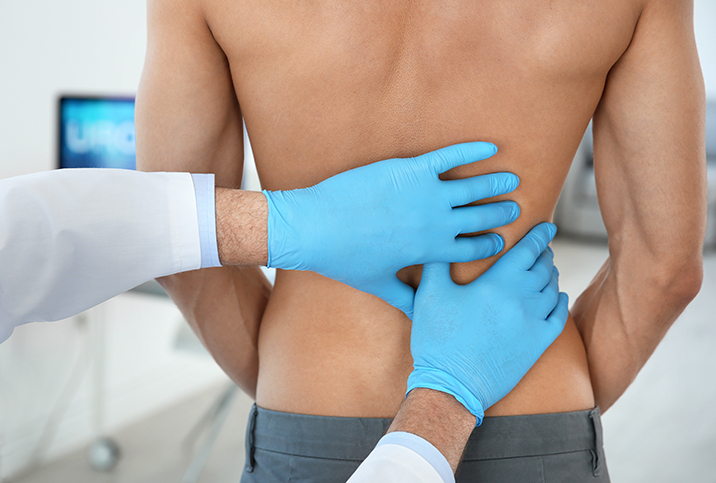Common Risk Factors for Prostatitis

For a largely unobservable gland few of us will ever see, and many of us never think about, the prostate can cause a lot of trouble.
If you live long enough, you're pretty much guaranteed to suffer from an enlarged prostate—90 percent of men older than age 80 have one—along with all the urinary problems that go with it. That's not even to mention the looming specter of prostate cancer, the second most common type in men behind only skin cancer. Nearly a quarter of a million new cases are diagnosed each year in the United States alone.
Then there's prostatitis, the inflammation and swelling of the prostate gland. Prostatitis is the most common urinary tract issue for men younger than 50 and the third most common one for older men, accounting for 2 million doctor visits annually.
Let's look at the causes of prostatitis and examine whether there are any specific risk factors men can watch out for.
What is the prostate?
The prostate gland is the backing band for the male reproductive symphony, an unsung hero of male orgasm, responsible for creating the seminal fluid that mixes with sperm when a man ejaculates. The prostate is the engine of the orgasm in many ways: The muscular gland contracts when a man orgasms, pulsing to force semen out of the penis.
The prostate is located below the bladder and surrounds the urethra just in front of the rectum, so any discomfort or inflammation can have repercussions throughout the lower abdomen.
"Prostatitis patients will typically have acute onset severe pain, like they're sitting on a tennis ball," said Neel Parekh, M.D., a urologist who practices with the Cleveland Clinic. "They'll have an achy feeling in their perineum, and they can have fever, chills and burning when they pee, so a lot of irritative urinary symptoms and pain."
But identifying the condition is only the first step—figuring out the specific cause of a man's prostatitis is where the real work begins for healthcare providers.
Causes of prostatitis
Prostatitis manifests in four commonly accepted types:
- Acute bacterial prostatitis: A urinary tract infection (UTI) travels up to the prostate, infecting it as well.
- Chronic bacterial prostatitis: Bacteria trapped in the prostate cause recurring UTIs.
- Chronic pelvic pain syndrome (CPPS): Also sometimes called nonbacterial prostatitis, it's the most common type, with inflammation causing chronic pain in the perineum, genitals and throughout the pelvis.
- Asymptomatic inflammatory prostatitis: Simply an inflamed prostate with no pain or other symptoms, this version is often left untreated.
The doctor's main goal when diagnosing patients is to decipher which of these four types is causing the problem, Parekh said.
"I primarily see patients in that chronic pelvic pain classification, but I also see all the other ones," he said.
If a patient has acute bacterial prostatitis, there could be a number of causes:
- Urinary tract infections
- Urologic procedures, such as a recent catheter insertion or surgery via the urinary tract
- Unprotected sex, including anal sex
- Phimosis
"Bacterial prostatitis is easy. A man develops a bacterial infection from the urinary tract, and the bugs take up residence in the prostate," said Jesse Mills, M.D., associate clinical professor of urology and head of the Men's Clinic at UCLA. "Antibiotics and anti-inflammatory medicine usually cure this. Nonbacterial prostatitis is a messy diagnosis. It's characterized by prostate and pelvic pain, where urine and prostate fluid tests come up negative for bacteria."
If tests of the man's urine and prostatic fluid are negative for bacteria, then clinicians have more detective work on their hands.
Some risk factors and possible causes of nonbacterial prostatitis, or CPPS, include urinary issues; for instance, older men who don't empty their bladder all the way, or younger men who change their urinary habits when they're on a long flight or road trip, Mills said.
Other possible risk factors for CPPS include:
- Bicycle riding
- A previous bacterial prostatitis infection
- Irritation due to urine backflow into the prostate
- Irritation from chemicals
- Nerve issues in the lower urinary tract
- Problems with pelvic floor muscles
- Sexual abuse
- Viruses
- Parasites
What you can do about prostatitis
As Mills said, treating bacterial prostatitis is often straightforward, using antibiotics and anti-inflammatories.
However, not every case goes down this way.
"Some guys can get very sick and require hospitalization or IV antibiotics," Parekh said. "Sometimes it can develop into an abscess in the prostate that needs surgery or drainage. And because of how swollen the prostate can get, they might need some diversion of their urine temporarily. So it can definitely get pretty severe if left untreated."
Any sudden onset of pain or discomfort in your lower abdomen that doesn't go away in a day or two is a reason to see a healthcare professional.
However, if you're an "ounce of prevention is worth a pound of cure" guy—and you really should be, for the sake of your prostate—there are some ways men can reduce their chances of contracting prostatitis.
In addition to avoiding unprotected sex, the key for men is to keep the waterworks flowing properly.
"Stay hydrated, drink plenty of fluid—hopefully, water," Parekh said. "They want to make sure they're urinating appropriately, every two to three hours, and not holding their urine. The body's natural defense against infection is to urinate, so the more you hold your urine, the more opportunity the bacteria have to multiply in the bladder, which can cause a bladder infection or prostatitis."


















